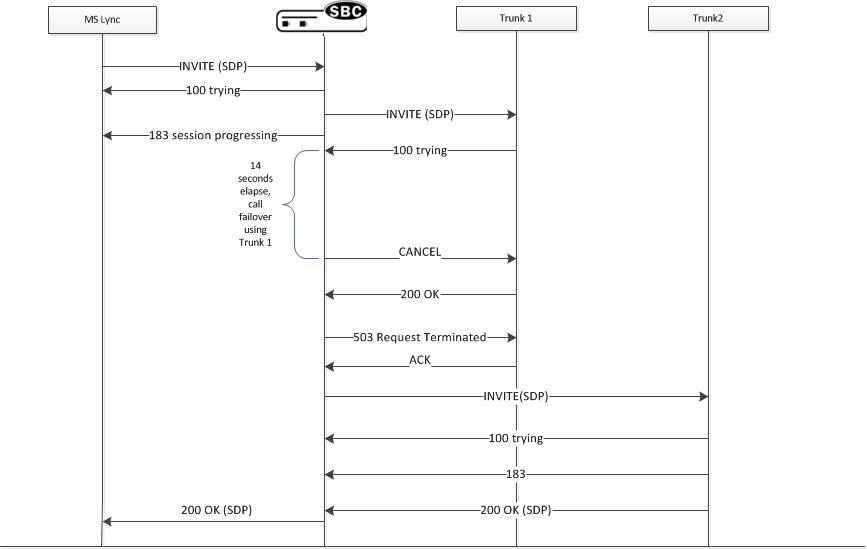Lync Emergency Call SPL Plug-in
When using the Oracle® Enterprise Session Border Controller (E-SBC) as a gateway for E911, service providers may require a Post-dial-delay of 6 seconds or greater to receive an 18x message and progress the session. Microsoft Lync emergency calls have an internal timer of 10 seconds to route advance to the alternate gateway in the event no 18x message is received. The Lync Emergency Call SPL plug-in responds to the initial INVITE with the 183 message, allowing theE-SBC to ensure normal call delivery when there is Post-dial-delay on egress routes that exceed the Lync emergency call timer.
When enabled, the return_183_on_initial_invite SPL plug-in sends a provisional 183 session progressing message to Lync when the E-SBC receives the initial INVITE request. This satisfies the 10 second emergency call timer.
The E-SBC monitors the primary and secondary trunks with a SIP OPTIONS ping. If the primary trunk is unavailable, the system automatically fails over to the second destination in session-group and completes the call.
In the following example, the E-SBC replies to an emergency call INVITE from Lync with a SIP 183 message. Lync moves the call and dialog to RFC 3261 Timer C (180 seconds), allowing sufficient time to complete the call and to find the nearest PSAP (Public Safety Answering Point) with the primary trunk. If the primary trunk is unavailable (The system monitors the two trunks with a SIP OPTIONS ping), the system routes the emergency call by failing over to a secondary trunk to complete the call.




